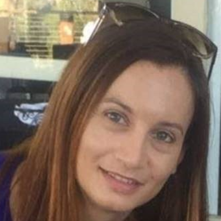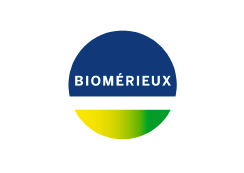Combating QC challenges and special needs of cell and gene therapy production
Cell & Gene Therapy Insights 2021; 7(11), 1373–1378
10.18609/cgti.2021.181
“Time matters. We need to speed up immunotherapy development and manufacturing. We need to help companies speed up the quality control of these products and make them available to these suffering patients.”
Félix Montero Julian sees the clock ticking. As the Scientific Director of Healthcare Business at bioMérieux, a global leader of in vitro diagnostics, he understands the urgency of cell and gene therapy delivery as a patient’s last line of treatment.
The demand for regenerative medicine is soaring – whether for cancer, sickle cell disease, spinal cord injuries, or bone marrow transplants.“It’s limitless as far as what [these therapies] can treat,” says Rey Mali, VP Sales and Marketing at Accellix, a manufacturer of a cartridge-based, automated flow cytometry platform. “This is the wave of the future for treatments.”
With so much at stake, quality control testing of manufacturing processes is crucial. With safety testing and quality cellular attribute testing representing 80% of quality control (QC) needs [1]Alliance for Regenerative Medicine. Regenerative Medicine in 2021: A Year of Firsts & Records. , it’s time to ask if QC strategies sufficiently safeguard the accuracy, consistency, and timeliness of cell therapy products.
Fortunately, significant advances are supporting development, manufacturing and control of these therapies for patients urgently awaiting treatment. Félix Montero Julian of bioMérieux and Rey Mali of Accellix teamed up in 2020 with the same end goal: to streamline QC testing – safety and cellular attribute analysis – with a more comprehensive workflow to accelerate production and control of cell and gene therapies. This partnership works with cell and gene therapy manufacturers to:
- Improve manufacturing processes by providing on-site, automated, and rapid testing to deliver actionable results with reduced hands-on time;
- Reduce the cost of QC to make these therapies more accessible; and
- Ensure any cell or gene therapy that is administered to a patient is safe, effective and meets a pre-defined set of quality parameters.
We caught up with Félix and Rey to find out more.
Q How does slow turnaround time affect C> production and their patients?
RM: The cell and gene therapy manufacturing process takes anywhere between 2 to 4 weeks, on average. As new research and trials roll out, the time is gradually getting shorter. But the patient is still waiting three weeks to a month, from the point they give their blood to the point that they receive their therapy infused. During that manufacturing process, there are many, many different QC checkpoints that verify: Is the process proceeding as planned? Can we infuse the cells into the patient? Does the batch have the right population of cells? Did the cells get modified correctly?
Most microbiological techniques still rely on compendial methods in which samples are placed in culture broth media. By nature, these kinds of cultures take time. Sterility testing requires 14 days, as regulated by pharmacopeia. We cannot afford to wait 14 days to have results on these products because it’s wasting time for the patients. Thankfully, we have the technologies to detect micro presence in the samples in a few days, as opposed to 14 days. Some technologies deliver results in 5 to 7 days using growth-based methods.
Q What is the manufacturing impact of having low production volumes for C>?
FMJ: Microbiological testing, including microbial content (bacteria, yeast and molds), endotoxins and mycoplasma, are only one part of the quality control that is done for cell and gene therapy products. Different samples of the final product are needed to perform these three different tests. The other tests are related to the cells themselves – these are what we call quality cellular attributes. Our technologies can tolerate small sample volumes, which is critical because these products are not thousands and thousands of liters. For example, manufacturers of therapeutic monoclonal antibodies are able to produce hundreds of thousands of liters of product, so it is less critical to minimize volume taken out for testing. In contrast, cell and gene therapy final products are only several hundreds of milliliters. In that case, manufacturers need to use the minimum volume of product to do all the testing mentioned before and keep the majority of the product for patient infusion. For cell and gene therapies, it is important to work with the minimum volume of product, and maintain a rapid time to results. This is critical. Our technologies can reduce the sterility testing time by half.
Q How does manpower play into the C> QC process?
RM: Every company is kind of writing their own script as to how many QC checkpoints they need because they’re all going after something different. Some of them have five, some of them six, some of them have eight during the manufacturing process. And each one of those QC checkpoints monitors environmental sterility or quality cellular attributes, which traditionally takes a lot of time and manpower. Turnaround time there is critical because you have a patient waiting on the other side that can die. With our technologies, lower-level operators can manage the testing easily and accurately, so you don’t need to have highly-trained staff and manual processes that add variability.
Q What impact does accessibility have on C> patients?
RM: There are boundaries to manpower and a typical 8-hour working day. During clinical trials, you’re recruiting patients who come in at all hours of the day, so your lab needs to be accessible 24 hours a day, seven days a week. I’ll give you an example. We visited a GMP facility last week where they’re testing bone marrow. They have patients coming in the middle of the night. Do you really want to do manual analysis or manual processes with an operator working at 2 am and then rely on those results to treat a patient? What if they are tired? What if they are exhausted? What happens then? Without QC technologies that run 24/7, the quality of treatment is put at risk.
Q How are C> manufacturers maneuvering in this new and fast-moving field?
FMJ: There are many targets that scientists have identified as key in tackling different types of cancers. There is also the possibility of combining cell therapies with other approaches, making them more powerful for cancer treatment. All this, obviously, is making the FDA very cautious and scrutinizing a little bit more. We’ve heard of filings where the FDA has expressed concerns about the lack of consistent tests and measurements to ensure the quality of the therapy. We can bring a lot of value here because we provide consistent technologies that respond to these FDA requirements.
Q When does custom assay development come into play with customers?
RM: We have a few off-the-shelf assays, but really the long-term plan with most our customers is to develop a custom assay that is specific for the cell therapy that they are developing. Customers typically use our off-the-shelf kits to monitor the incoming quality of cells before processing or to address cellular impurities. After the cells are genetically modified to redirect their specificity, they will use a custom assay. So for each cell therapy, the manufacturer will implement multiple QC checkpoints, and prior to release, this is when the manufacturer monitors and QC’s that the sample is not contaminated and that the genetic modification was successful. The custom assay during release testing is a pivotal point in platform adoption because that gets written into their SOPs which they eventually submit to the FDA and determine how the commercial product is manufactured.
Q What do you see for the future of C>?
FMJ: It’s so exciting because these kinds of therapies are currently a last line of treatment for the patient. When we look at patient responses to current therapies, it is about 10%. The response rates of some recent CG&T clinical trials were 60%. So going from 10% to 60% is a big win.
The global outcome is so, so positive because it is only one injection. This can reduce all the pressure on the health economy. Instead of having patients go to the hospitals often and stay for a long period of time, in the case of C>, patients goes only one time for the cell infusion, after the product infusion patients stay for a continuous monitoring for a few days due to the fact that current CART therapies have side effects that needs to be identified earlier And yeah, the cost is high. But the goal is to decrease it with new technologies and with new manufacturing approaches.
RM: A cell therapy (for example an autologous CAR-T treatment for hematologic cancer) costs around half a million dollars per treatment. This market is where sequencing was about 20 years ago, where it was so expensive to sequence an entire human genome. Now it’s under $1,000 per whole genome, and that’s where we’re hoping to see cell therapies go and we’re part of that solution.
References
1. Alliance for Regenerative Medicine. Regenerative Medicine in 2021: A Year of Firsts & Records. Crossref
Affiliations
Félix Montero Julian
Healthcare Scientific Director, bioMérieux
Rey Mali
Vice President Sales and Marketing, Accellix
Authorship & Conflict of Interest
Contributions: All named authors take responsibility for the integrity of the work as a whole, and have given their approval for this version to be published.
Acknowledgements: None.
Disclosure and potential conflicts of interest: Julian FM is an employee of bioMerieux. The authors declare that they have no other conflicts of interest.
Funding declaration: The authors received no financial support for the research, authorship and/or publication of this article.
Article & copyright information
Copyright: Published by Cell and Gene Therapy Insights under Creative Commons License Deed CC BY NC ND 4.0 which allows anyone to copy, distribute, and transmit the article provided it is properly attributed in the manner specified below. No commercial use without permission.
Attribution: Copyright © 2021 Alexandre Merieux. Published by Cell and Gene Therapy Insights under Creative Commons License Deed CC BY NC ND 4.0.
Article source: Invited.
Interview conducted: Oct 28 2021; Publication date: 23 November 2021.



